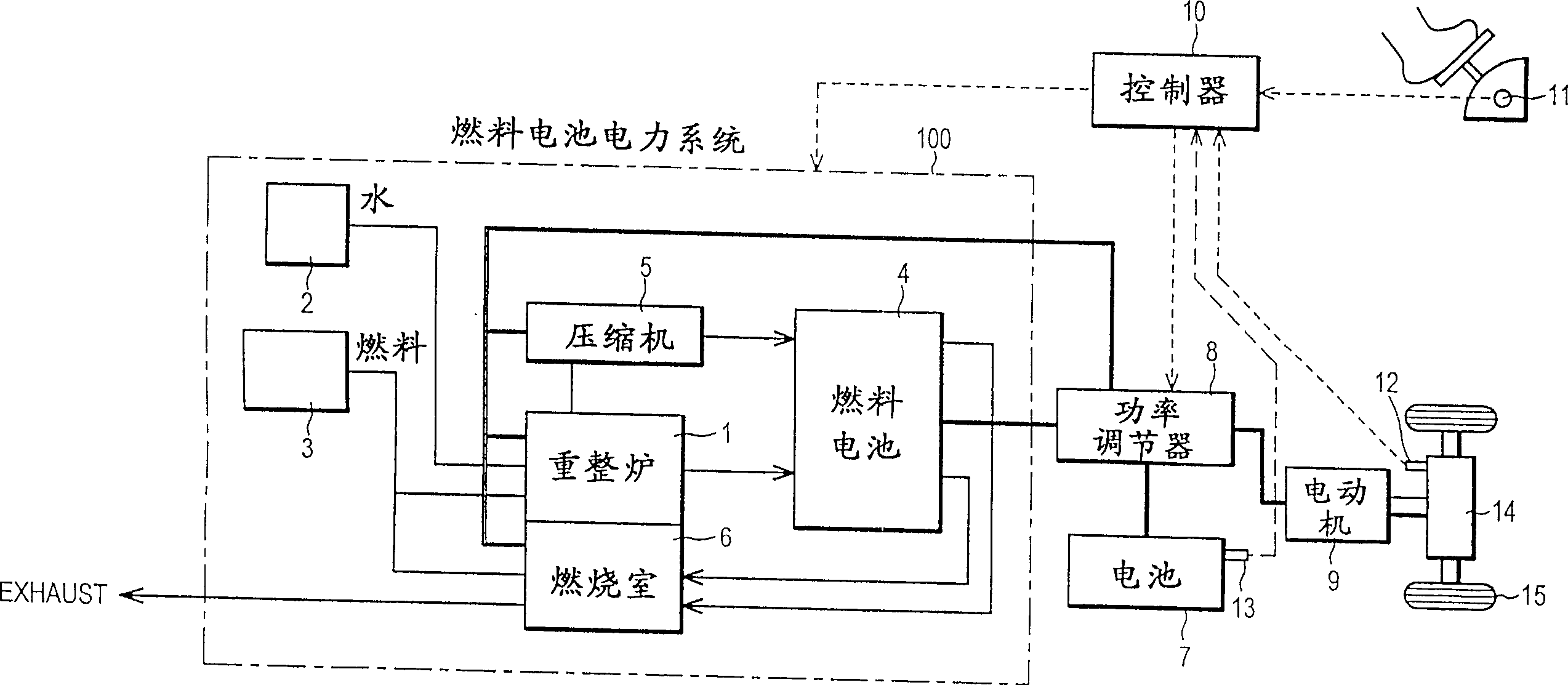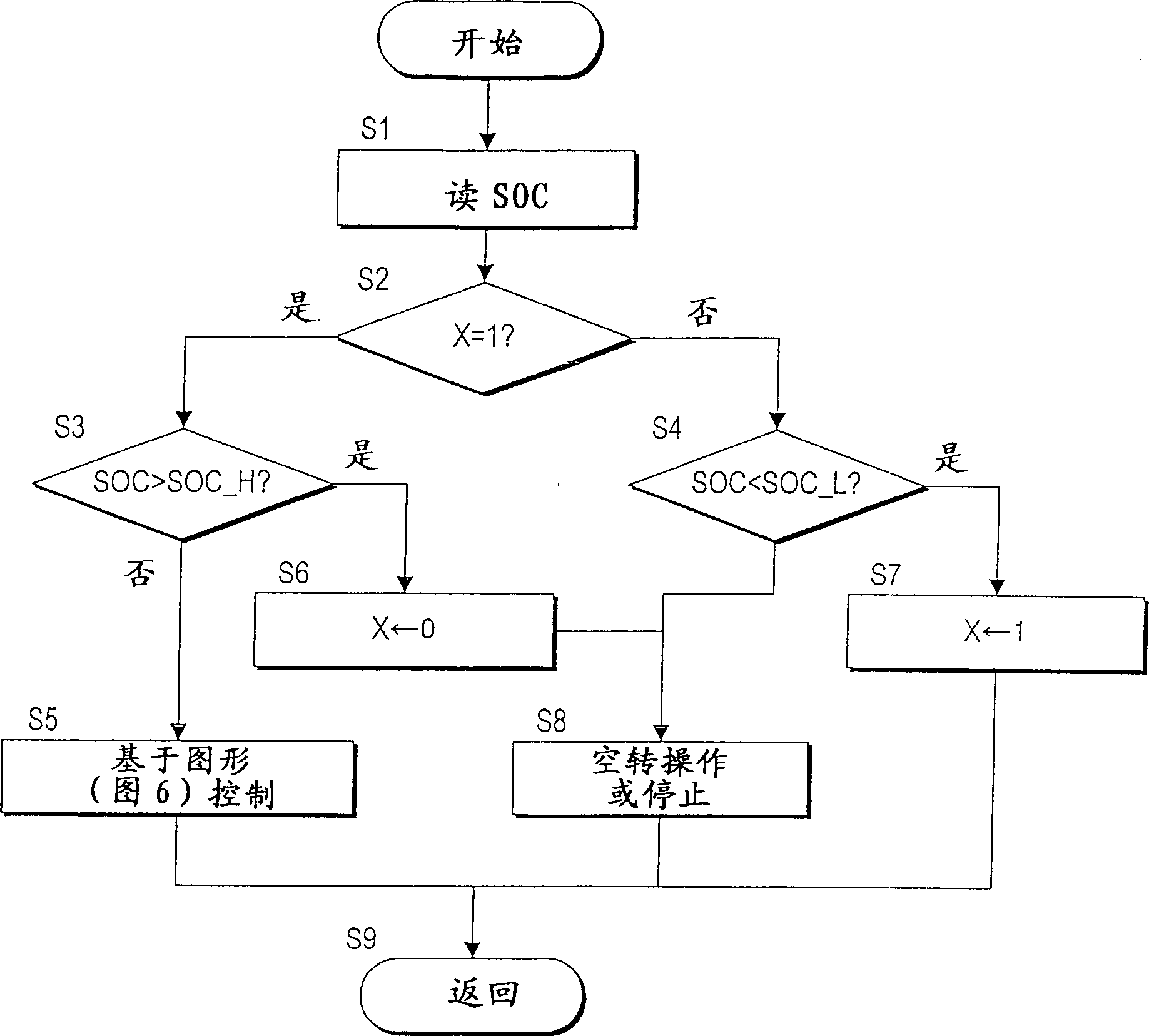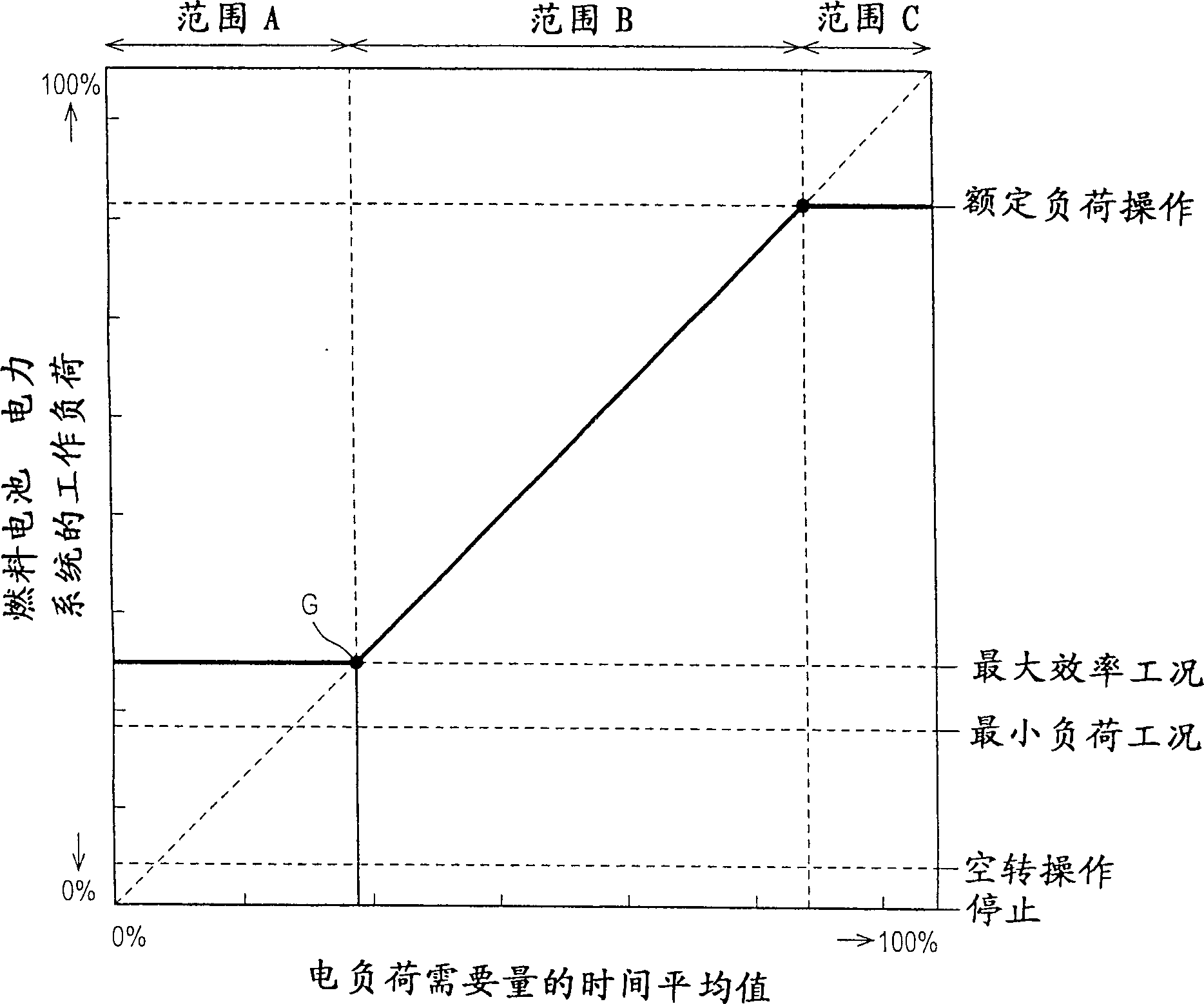Operating load control for fuel cell power system in fuel cell vehicle
一种燃料电池车辆、燃料电池的技术,应用在电池/燃料电池控制装置、燃料电池、燃料电池助剂等方向,能够解决成本高、燃料消耗减少等问题
- Summary
- Abstract
- Description
- Claims
- Application Information
AI Technical Summary
Problems solved by technology
Method used
Image
Examples
Embodiment Construction
[0023] Refer to the attached figure 1 , figure 1 The structure of the fuel cell vehicle related to the present invention is shown. The fuel cell power system 100 enclosed by the dashed line in the figure includes: a reforming furnace 1, a water tank 2, a fuel tank 3, a fuel cell 4, and a compressor 5.
[0024] The reformer 1 is supplied with water and methanol from the water tank 2 and the fuel tank 3, and the reformer 1 generates a reformed gas containing hydrogen from the steam reforming. Steam reforming is an endothermic reaction. The reformed gas is supplied to the anode of the fuel cell 4. Hydrocarbon fuels other than methanol such as gasoline can also be used as fuel.
[0025] If the reforming catalyst injected into the reformer 1 does not reach the activation temperature, for example, when the system is just started, the air as the oxidant is supplied to the reformer 1 from the compressor 5, and the reforming caused by partial oxidation of methanol can also be performed. ...
PUM
 Login to View More
Login to View More Abstract
Description
Claims
Application Information
 Login to View More
Login to View More - R&D
- Intellectual Property
- Life Sciences
- Materials
- Tech Scout
- Unparalleled Data Quality
- Higher Quality Content
- 60% Fewer Hallucinations
Browse by: Latest US Patents, China's latest patents, Technical Efficacy Thesaurus, Application Domain, Technology Topic, Popular Technical Reports.
© 2025 PatSnap. All rights reserved.Legal|Privacy policy|Modern Slavery Act Transparency Statement|Sitemap|About US| Contact US: help@patsnap.com



